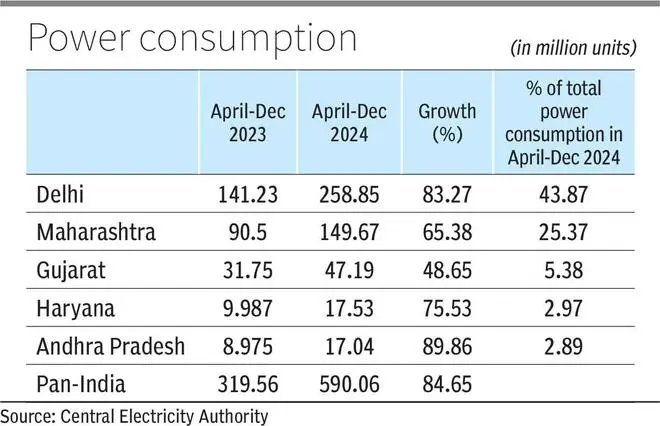The amount of electricity consumed by public charging stations (PCS) for electric vehicles (EVS) across the country increased by about 85 percent yoy to 590.06 million units (MU) during the first three quarters in the current financial year.
According to the latest data from the Central Electricity Authority (CEA), PCSS in Delhi consumed the highest amount of electricity after Maharashtra, Gujarat, Haryana and Andhra Pradesh.
High power consumption by PCSS is being attributed to an increase in the number of EVS, especially two and three-wheelers being used, which are being used rapidly in transport and logistics services for final mile delivery, especially by e-commerce and quick commerce firms.
During the April-December period in FY25, Delhi’s power consumption increased by 83.27 percent YOY to 258.83 MU. Electricity consumed by charging stations in Delhi was 43.87 percent of the cumulative power consumed by PCS in the country.
Consumption growth
Maharashtra, which was responsible for more than one-fourth of electricity consumed by PCSS in the country, saw an increase in its consumption from 65.38 percent Yoy to 149.67 MU.
Electricity consumption by PCSS in Haryana increased by 75.53 percent yoy to 17.53 mu. The North Indian state had about 3 percent of the power consumed by PCSS in the country. On the other hand, PCSS consumed 17 MU electricity in Andhra Pradesh, which increased by 89.86 percent.
Around 26,367 EV PCS has been deployed across the country by March 2025 in India. Karnataka has the largest number of PCSS at 5,879, followed by Maharashtra (3,842), Uttar Pradesh (2,113), Delhi (1,951), and Tamil Kadu (1,495).

According to FICCI’s EV Public Charging Infrastructure Roadmap 2030, the current financial viability for PCSS is less than 2 percent of the use rate. To achieve profitability and scalability, the rate of use must be about 8–10 percent by 2030.
It also highlights important challenges such as high infrastructure costs and low use rates, lack of uninterrupted power supply and standardized protocols to enable interoperability.
Citing an example, the report stated that the current cost structure of the power tariff with a fixed fee is also challenging to achieve the brake, regardless of the consumption of joint energy with low use in PCSS. States like UP, Delhi and Gujarat do not have any/ less fixed tariffs, but there are other states where there are more tariffs, which challenges feasibility.
